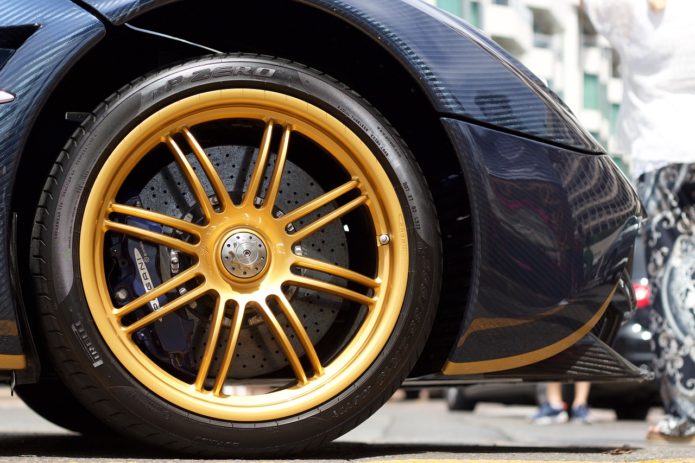The vehicle rim selection might take you by surprise, as you have always known the wheel and the rim are synonymous words. Well, if analysed technically, both the objects are different even though they are pressed together.
The younger generation often uses the term ‘rims’ while referring to the aftermarket spare parts. Be it the skateboards, bicycles, or the gorgeous saloons, people interchangeably use both the words many a time. However, if you visit a bike shop and ask for a 26-inch rim, you would get a rim and not a wheel.
Car rims are different from car wheels in the following ways:
Anatomical Difference between Rims and Wheels
A rim is a part of the wheel and doesn’t represent the entire wheel. It’s the outermost hoop to which the tyre is mounted.
Primarily made up of the hub, spokes, and rim, the wheels refer to the spherical blocks underneath the vehicle, helping it move in specified directions. The significant parts of a wheel are:
Centre Bore—an opening in the middle of the wheel positioned in the back
Centre Cap—a removable in the wheel exterior covering the centre bore
Lug Holes—forms a variety of bolt patterns
Centre Disc—consisting of the axle mounting pad and the spokes
Spokes—vertical structures connecting the axle mounting pad and the outer wheel edge
Outer Lip—the portion in front of the spokes
Valve Stem—it’s a mechanism used universally to inflate tyres and integrate tyre pressure.
Barrel—the portion with the tyre mounting structures such as the inboard flanges, drop centre, etc.
Rim—the outer lip of the wheel that holds the tyre
Differences in Fabrication
Car rims and wheels are parts of the same metal, cast, and put together. Confusions arise, as the rim preparation is also a part of wheel manufacturing. Here are the four key industry-standard processes of fabrication:
Casting
This procedure follows pouring molten metal into the mould. This one is considered the simplest method in wheel creation.
Flow Forming
With the purpose of creating a thin but strong wheel structure, the metal is first poured into the mould and then stretched, applying high pressure. The flow forming method uses rollers to shape up the wheels.
Forging
When an aluminium and aluminium alloy billet is crushed into a wheel’s shape under a high amount of pressure, it is called forging. This way, the wheel structure is made dense, sturdy, yet light.
Rotary Forging
This two-die process involves the usual forging technique, but it spins the wheels at high speed while its rims are being forged. TSW Wheels and Motegi Racing Wheels are using this advanced MO that creates stronger wheels.
What Is the Functional Difference between Rims and Wheels?
Although the functions of the rims and wheels are interconnected and similar to a broader extent, there is a fundamental dissimilarity in-between considering the individual functional aspects.
The rim that is a crucial part of the wheel rotates around the axles; their job is to hold the rubber tyre in place firmly.
Remember, if the tyre doesn’t properly sit on the rims or in case the rim diameter doesn’t match that of the tyre, you might experience bumpy rides and stability issues, leading to collisions.
The objective of the wheel is to allow the vehicle to roll forward or backward as it moves in circles.
Now that you have hopefully understood the basic differentiations between car rims and the wheel as a whole, you have moved a step ahead in car mechanics. So no matter whatever vehicle you drive, an SUV, or a giant truck, make sure you choose the right fitting tyres according to the rims. It will make your drives more comfortable and safe.


